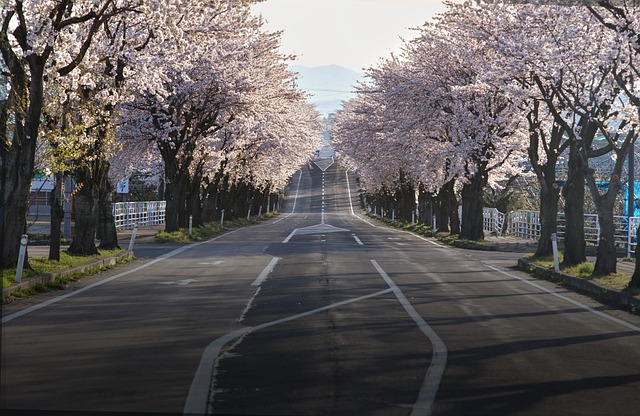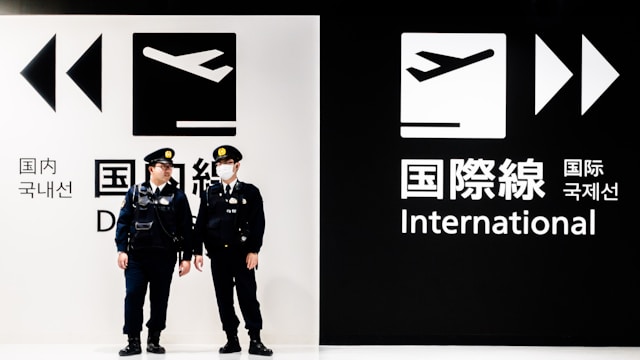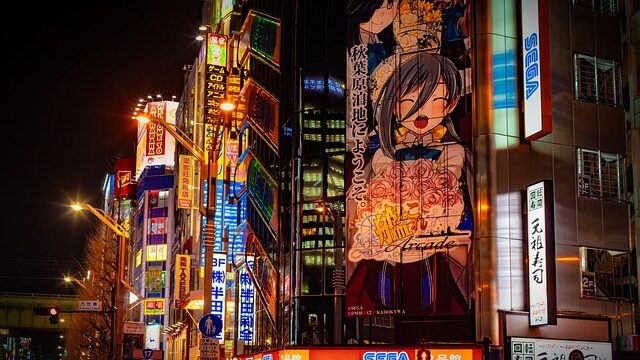Embarking on a journey through Japan can be both an exhilarating and slightly intimidating experience, especially if you plan to drive. But fear not! Here’s everything you need to know about understanding and navigating Japan’s roads.
1. Driving on the Left Side
Japan’s practice of driving on the left side of the road can be an adjustment for those accustomed to right-hand driving. This convention has historical roots that trace back to the samurai era. The samurai would walk on the left to ensure their right arm (where they wore their sword) was free to draw it swiftly in case of a sudden altercation.
When you’re driving in Japan, not only is the flow of traffic on the left, but everything in the car is also “reversed.” The driver’s seat is on the right side, and all the controls are oriented accordingly. When making turns, particularly at intersections, it’s essential to be extra conscious. For instance, when you’re making a right turn, you’ll need to cross oncoming traffic, which is opposite to the experience in right-hand driving countries.
Another element to keep in mind is the positioning at intersections and traffic lights. You’ll often find the pedestrian crossings on your right side when waiting at a junction.
Roundabouts, although less common in Japan than in many European countries, are navigated clockwise. This is opposite to countries with right-hand driving, where roundabouts are taken counter-clockwise.
Lastly, when merging or changing lanes, always check over your left shoulder for oncoming traffic or potential blind spots. The adjustment to left-hand driving can be swift for some and challenging for others, but with time, patience, and a bit of practice, it becomes second nature. Remember, when in doubt, always follow the flow of local traffic, and you’ll be on the right track!
2. Deciphering Road Signs and Markings
Understanding road signs is crucial for a smooth driving experience in any country, and Japan is no exception. While Japanese road signs incorporate many international standards, they also have unique symbols and conventions that may initially be unfamiliar to foreign drivers.
One of the first things drivers will notice is that directional signs, especially on main roads and highways, are bilingual. They carry both Japanese Kanji characters and their English counterparts, making navigation considerably easier for non-Japanese speakers.
The “STOP” sign in Japan is a red, inverted triangle with the word “止まれ” (Tomare) written in white. This is a departure from the octagonal shape familiar to many Westerners. It’s essential to recognize this sign to avoid unexpected stops.
Speed limit signs are quite intuitive, presented as white circles with a red border. The number in the center indicates the speed limit in kilometers per hour. Be attentive to these, as Japan has a strict adherence policy to speed regulations.
Pedestrian crossings, often called zebra crossings due to their striped appearance, are common in urban areas. At these crossings, pedestrians have the right of way, and vehicles are expected to stop. You might also encounter raised or textured pavement near pedestrian areas, serving as a tactile warning for drivers.
Blue road signs, meanwhile, are indicative of expressways or highways. These are especially prominent when approaching entrance or exit ramps. Additionally, yellow diamond-shaped signs are used for warnings, indicating upcoming changes like curves, intersections, or other potential hazards.
Parking signs are also crucial to pay attention to. Japan has specific rules about where you can and cannot park, often indicated by signs with both symbols and Kanji. For example, a circle with a blue background and a white ‘P’ indicates parking, while the same symbol with a red slash through it signifies no parking.
In summary, while many of the road signs in Japan have similarities to international standards, understanding the nuances and local conventions is vital for a safe driving experience. Before getting on the road, it’s a good idea to familiarize yourself with these signs, or even keep a reference guide on hand to ensure smooth travels.
3. The Contrast: City Driving vs. Countryside Driving
Navigating Japan’s streets offers a dynamic experience, with driving in the buzzing metropolises starkly contrasting the serene, rustic expanses of the countryside. Here’s a deeper dive into these two distinct experiences.
City Driving:
Japan’s cities, particularly hubs like Tokyo, Osaka, and Kyoto, are characterized by their dense urban architecture and teeming population. This translates to several challenges and considerations for drivers:
- Traffic Jams: Especially during the morning and evening rush hours, traffic congestion is a given. Patience and anticipation are key as you navigate the bustling streets.
- Parking: Most of the city centers have limited parking space. When available, it often comes at a premium. Many drivers utilize multi-tiered automated parking garages, which, while efficient, can be pricier than conventional parking lots.
- Pedestrians: The streets are often flooded with pedestrians, especially in commercial areas and near train stations. Always be vigilant and yield to pedestrians, as they have the right of way at crossings.
- Complex Intersections: Many large cities in Japan feature complex intersections with multiple lanes, underpasses, and sometimes overhead roads. Having a reliable GPS system can be invaluable in such scenarios.
Countryside Driving:
As you venture out of the cities, the environment shifts to a more laid-back, scenic landscape, but with its own set of challenges:
- Narrow Roads: Many rural roads in Japan are narrow, sometimes accommodating only one vehicle at a time. Regularly, drivers have to pull over to a side pocket to let an oncoming car pass.
- Tunnels: Japan’s mountainous terrain means you’ll encounter numerous tunnels. Ensure your vehicle’s headlights are on and remain alert, as some tunnels can be quite long.
- Unpredictable Elements: From wandering wildlife to sudden weather changes, especially in mountainous regions, being prepared for the unexpected is vital. In some areas, you might come across rice fields with large farming machines that take up most of the road.
- Local Etiquette: The countryside is where traditional Japan shines through. It’s not uncommon for local drivers to greet each other or even pedestrians with a nod or wave. Emulating this politeness goes a long way in fostering goodwill.
In essence, whether you’re navigating the electrifying streets of Tokyo or winding through the picturesque roads of Hokkaido, understanding the driving environment and its associated challenges ensures not just safety but also a richer travel experience. Each drive offers its own stories, vistas, and lessons, capturing the essence of Japan in every mile.
4. Navigating Parking and Tolls
One of the nuanced aspects of driving in Japan involves handling parking situations and navigating the country’s extensive toll system. Both these elements can greatly impact the convenience and cost of your journey. Here’s a more detailed insight into what you can expect and how to navigate these efficiently:
Parking in Japan:
- Automated Parking Garages: Common in densely populated urban areas, these are multi-story structures where drivers leave their vehicle on an automated platform. The car is then mechanically transported to a vacant parking slot. When leaving, you pay at a kiosk, and the system retrieves your car.
- Coin Parking Lots: Found in both urban and rural settings, these are open-air parking areas where you pay by the hour. Typically, you’ll get a ticket upon entering, and when leaving, you’ll insert this ticket into a machine that calculates the fee.
- Parking Meters: Especially prevalent in older parts of the city or less densely populated areas, parking meters require drivers to pay for a fixed amount of time. You’ll often need to display the receipt on your dashboard.
- Parking Availability: In highly congested areas like city centers, finding parking can be challenging. Some modern GPS systems offer real-time updates on parking availability, saving time and frustration.
Toll Roads:
- Payment Methods: There are several ways to pay toll fees in Japan. Cash is accepted at most toll booths, but for frequent travelers or those on longer journeys, acquiring an Electronic Toll Collection (ETC) card and corresponding onboard device can make transitions seamless.
- Toll Calculations: Unlike flat-rate toll systems in some countries, Japanese tolls often depend on the distance traveled. Upon entering, you receive a ticket. When exiting, you present this ticket, and the fee is calculated based on your journey length.
- Expressway Passes: For tourists or those planning to cover vast distances, regional expressway passes might be a cost-effective option. These passes allow unlimited travel within certain regions over a set number of days. It’s essential to check eligibility and areas of validity before purchasing.
- Free Roads vs. Toll Roads: Not every road in Japan requires a toll fee. Mainly, tolls are charged on expressways. Before starting your journey, map out your route and determine which sections, if any, are toll roads. This helps in budgeting and ensuring you have the necessary payment methods ready.
Being prepared and understanding parking and toll systems in Japan can greatly enhance the driving experience. It allows travelers to focus on the journey and the beauty of Japan rather than logistics, ensuring a memorable road trip across this magnificent country.
5. Etiquette and Safety
Japan is renowned worldwide for its deep-rooted culture of respect and politeness. This extends not only to interpersonal interactions but also to the way the Japanese navigate their roads. As a visitor, understanding and practicing these etiquettes can make your driving experience smoother and more enjoyable.
Road Etiquette:
- Acknowledging Courtesy: When another driver lets you merge, or if someone waits to allow you to pass on a narrow road, it’s customary to show appreciation. This is typically done by flashing hazard lights briefly or with a nod if the gesture is visible.
- Overtaking: Unlike aggressive overtaking in some countries, in Japan, it’s done carefully and politely. It’s common to signal your intention well in advance, and once you’ve overtaken, a brief flash of your hazard lights thanks the other driver for their patience.
- Use of Horns: Horns are rarely used in Japan and are typically reserved for emergencies or warning someone of potential danger. Avoid honking out of impatience or frustration.
- Queuing: Japanese drivers are disciplined when it comes to forming and waiting in lines, especially at traffic lights or stop signs. Cutting the queue is considered highly disrespectful.
Safety Measures:
- Seat Belts: Japan has strict seat belt laws. Ensure that both the driver and all passengers, including those in the back seats, have their seat belts fastened at all times when the vehicle is in motion.
- Child Seats: Children under six years of age are required to use child seats. If traveling with young children, ensure that you have the appropriate child seat installed.
- Alcohol and Driving: The legal blood alcohol limit in Japan is very low, and the penalties for driving under the influence are severe. It’s best to avoid drinking entirely if you plan to drive.
- Cell Phones: Using a cell phone while driving, unless you have a hands-free system, is illegal. If you need to use your phone, make sure to pull over safely first.
- Pedestrians: Pedestrians are given priority in Japan, especially at crosswalks. Even if there are no traffic lights, drivers are expected to stop and allow pedestrians to cross.
Understanding and practicing proper road etiquette and adhering to safety measures is not just about complying with local customs; it’s about ensuring a smooth and enjoyable driving experience for everyone on the road. Taking the time to familiarize yourself with these norms can enhance your journey and solidify positive interactions with local drivers.
6. Handling Emergency Situations
Should you face an emergency, it’s crucial to remain calm and know the essential helplines: 110 for the police and 119 for medical emergencies. Keep your driving permit and passport within reach, and consider having insurance that covers potential accidents or damages in Japan.
In wrapping up, driving through Japan offers a unique lens into its culture and landscapes. With the right information, any initial trepidation will soon transition into an unforgettable adventure. Safe travels!





